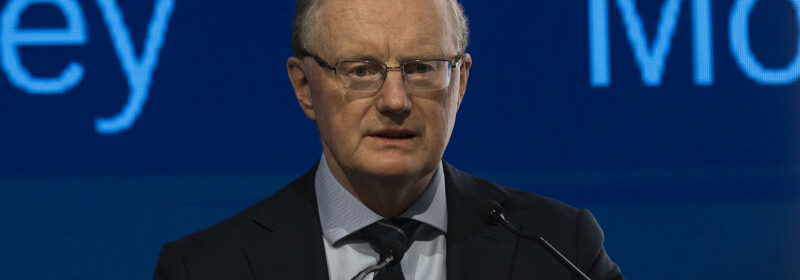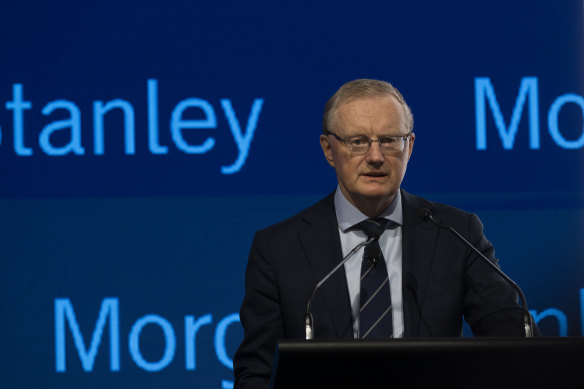National accounts show economy slowing faster than expected

Save articles for later
Add articles to your saved list and come back to them any time.
The Australian economy is slowing faster than expected, with the national accounts revealing it expanded by a subdued 0.2 per cent through the first three months of the year a day after the Reserve Bank lifted the official cash rate to an 11-year high of 4.1 per cent.
Reserve Bank governor Philip Lowe said in a speech before the economic growth figures were revealed that the bank’s “narrow path” to successfully bringing inflation down without bringing the economy to a halt would be bumpy.
RBA governor Philip Lowe at the Morgan Stanley conference the day after raising interest rates for the 12th time.Credit: Louise Kennerley
On Tuesday, the RBA board lifted interest rates by 0.25 percentage points to 4.1 per cent to tackle inflation, which was 7 per cent in the 12 months to March.
Lowe said bringing inflation down was vital to the nation’s long-term economic interests, because if it stayed high for too long, people would begin to expect it and high inflation will become self-perpetuating.
“As the historical experiences shows, the inevitable result of this would be even higher interest rates and, at some point, a larger increase in unemployment to get rid of the ingrained inflation. The board’s priority is to do what it can to avoid this,” he said in a speech to the Morgan Stanley Australia conference on Wednesday morning.
“It is a narrow path and likely to be a bumpy one, with risks on both sides.”
The quarterly national accounts figures published by the Australian Bureau of Statistics on Wednesday showed that GDP over the year to the end of March edged down to 2.3 per cent because of the weak quarterly result of 0.2 per cent. Markets had been expecting growth of 0.3 per cent in the quarter.
ABS head of National Accounts Katherine Keenan said it was the sixth straight rise in quarterly GDP.
“But [it is] the slowest growth since the COVID-19 Delta lockdowns in September quarter 2021,” she said.
Household spending added just 0.1 percentage point to growth. Discretionary spending was slower than expenditure on essentials since the Delta variant lockdowns of 2021.
The household saving-to-income ratio fell to 3.7 per cent, its lowest level since the June quarter of 2008.
“The household saving ratio fell to its lowest level in nearly 15 years,” Keenan said.
“This was driven by higher income tax payable and interest payable on dwellings, and increased spending due to the rising cost of living pressures”.
Lowe said the RBA modelling showing about 15 per cent of mortgage borrowers faced negative cash flows at a cash rate of 3.75 per cent were based on assumptions that people would make no changes as interest rates hit households’ mortgage payments.
“People can cut back spending, and in some cases find additional hours of work that will put them back into a positive cash flow position,” he said.
While Lowe said there would be various stresses from interest rates, he said it was “going to be the environment we’re operating in for a while yet”.
Treasurer Jim Chalmers says a combination of global uncertainty and higher interest rates are weighing on the Australian economy.
“These national accounts today confirm what a lot of Australians already know. And that is higher interest rates ad cost of living pressures are squeezing household budgets and slowing our economy at the same time,” he said.
“We see in these numbers today, that growth, momentum in the Australian economy is moderating as we expected.“
Chalmers said the rising interest rates were affecting the economy.
“The rising interest rates is clearly biting. We see that in the numbers because households are pulling back on spending. They’re saving less, and they’re paying more in interest,” he said.
Cut through the noise of federal politics with news, views and expert analysis from Jacqueline Maley. Subscribers can sign up to our weekly Inside Politics newsletter here.
Most Viewed in Politics
From our partners
Source: Read Full Article
